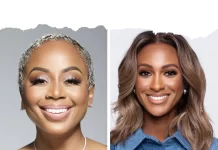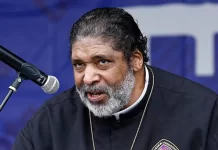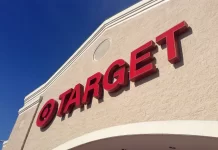By Deborah Bailey AFRO Contributing Editor of Afro.com

Bowie State University student Kiara Ebron was exuberant upon learning Vice President Kamala Harris and Gov. Wes Moore would be visiting her campus to encourage home ownership– specifically in the Black community.
The 22-year-old MBA student also decided attending the Harris appearance would be a wonderful way to celebrate her first anniversary as a homeowner in suburban Maryland.
The vice president came to Bowie State to unveil a Department of Housing and Urban Development initiative to reduce the annual mortgage insurance premium for most new borrowers, making Federal Housing Administration-backed (FHA) loans less expensive for first-time, moderate-income buyers.
“I am proud to announce that on March 20 we are reducing mortgage insurance payments for all new FHA homeowners by nearly 40 percent,” Harris said, to cheers from the audience on Feb. 22.
“We know that when we increase homeownership it strengthens communities and it strengthens our economy,” Harris told a crowd of Bowie State students, community members, and housing advocates.
FHA-insured mortgages account for 7.5 percent of all home sales and are targeted at homebuyers who otherwise may not be able to achieve homeownership. Through FHA home purchases are more affordable for lower, middle-income, and first-time homeowners, like Ebron, who bought her three-story townhome in suburban Maryland with an FHA loan. Through the FHA program, her down payment was less than $3,000.

The mortgage insurance payment reduction announced by Harris will apply to almost all single-family purchases insured by FHA under the agency’s Title II forward mortgage program.
The reduction will cover all eligible property types, including single-family homes, condominiums, and manufactured homes, all eligible loan-to-value ratios and all eligible base loan amounts, according to HUD.
Moore, who addressed the gathering shortly before Harris, said that Maryland is ready to partner with the federal government to help Maryland residents achieve home ownership.
“We’ve got to have the right partners,” said Moore, underscoring his administration’s homeownership strategy. “It’s great to have our vice president talking about issues of importance to us: work, wages, and wealth,” Moore said.
“The wealth gap is hurting not just one group. It is hurting all of us. For our state to win we must become an ownership society,” Moore continued, mentioning the Maryland Mortgage Program, a statewide effort supporting first-time as well as repeat home purchases.
Maryland ranks as one of the most expensive states in the U.S. for home buyers, according to the World Population Review. The Maryland Realtors Association estimated the average home cost is more than $433,000 at the end of 2022.
Bladensburg Mayor Takisha James said she is encouraged by the announcement and looked forward to support and technical assistance from state and federal partners for smaller communities, especially those nearby large urban centers.
“There is a critical need here for affordable housing options. Not being priced out of the market is so important to communities of color,” James said.
More than 40 percent of Bladensburg’s nearly 10,000 residents are renters. Current home sale averages for this Maryland community bordering Washington, D.C. range from $380,000 to more than $600,000.
James said her residents love the convenience of Bladensburg, and she wants to develop more options for affordable housing stock that will transform her renters into homeowners.
Elizabeth Scott Glenn, chair of the U.S. Africa Collaborative, Inc. and a veteran affordable housing advocate, said the announcement was another step needed to advance Black home ownership.
“We have got to find every means possible to close this housing gap in America and in cities across the world so black and brown people can build wealth,” she said.
According to U.S. census data, there is close to a 30 percent gap between Blacks and Whites in home ownership. In 2022, 74.6 percent of White households owned their homes, compared with 45.3 percent of Black households.
The gap between White and Black homeownership rates is wider now than in 1960, when housing discrimination was rampant and legal, according to Pew Charitable Trusts.

















